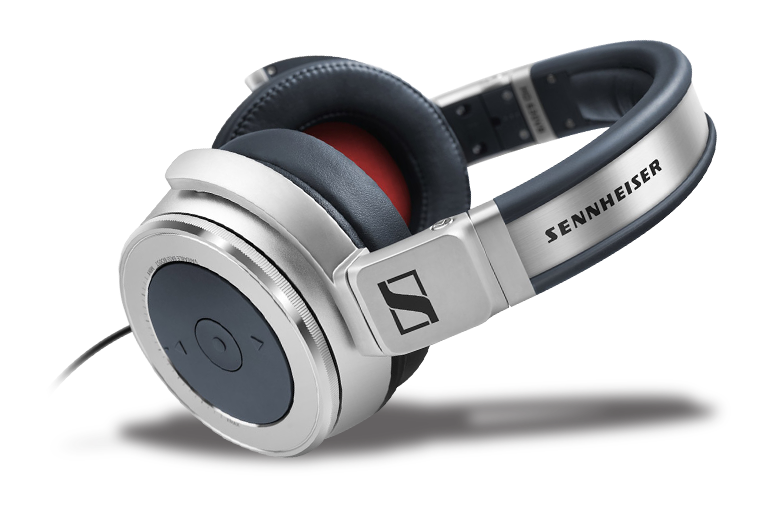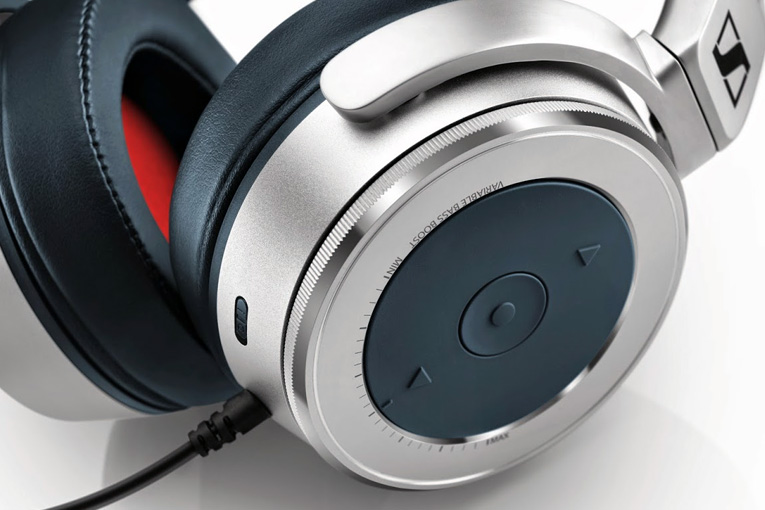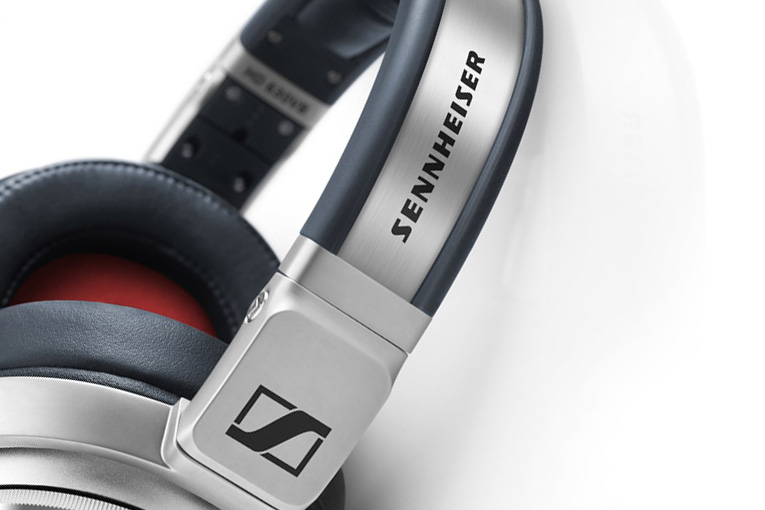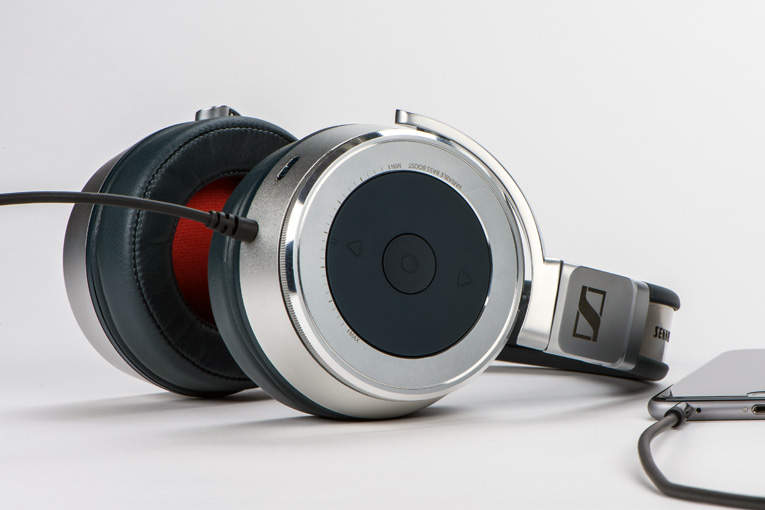Originally published on SoundStage! Xperience
Sennheiser HD 630VB headphones measurements can be found by clicking this link.
There can be no doubt that Sennheiser is one of, if not the, best-known headphone brands. The company offers models for every conceivable application, ranging in price from under $20 to the flagship HD 800S ($1699.95 USD). Sennheiser is also one of the few brands that is both familiar to the mass market and respected by audio engineers and audiophiles the world over.

For the latter, the HD 600 and HD 650 open-back, circumaural headphones have set a standard for refined sound, comfort, and durability at a reasonable price. But while audiophiles, generally listening in the quiet home environment, have tended to prefer open-back headphones -- attributing to them greater spaciousness and a more natural sound -- there are situations that require the isolation from external noise provided by closed-back ’phones. In such settings, it has generally been necessary to compromise a bit on sound quality. With the HD 630VB ($499.95 USD) -- the first closed-back offering in the HD 600 series -- Sennheiser seeks to change that perception.
Description
The HD 630VBs are very large, circumaural headphones. The outer diameter of each circular earpad measures 3.75”, and the distance from the earpad to the outside of the dome-shaped earcup measures 2”. An advantage of such large earcups is the ample 2.25” opening for each ear. There is also, within each cup, a considerable distance from ear to driver, which may confer benefits for sound as well as comfort.
Each aluminum earcup is mounted on a metal arm with a joint that permits a small amount of pivoting from top to bottom. The arm, in turn, is connected to a swivel mount on which the earcup can be rotated from front to back, and allows the headphones to be folded flat. There is also a hinge for folding the earcup up into the headband for storage in the included, semirigid case. The headband can be adjusted in closely spaced click-stops. All of this adjustability, combined with the supple synthetic leather and cushy foam of the earpads and headband, kept the HD 630VBs’ 0.88-pound (400gm) weight comfortable for me, though one female friend who tried them found them too large to achieve a proper seal. But any way you fold them, the HD 630VBs will take up a good bit of space in your baggage -- and forget about slipping them into a laptop case.
Buttons on the right earcup provide control of volume, music playback, and telephone operations, and a switch selects for compatibility with Androids or iDevices. The microphone is a small bulge on the cable that seems to hang at a typical distance below the headphones, but all those whom I called and spoke to with the Sennheisers said that I sounded as if I were calling from a reverberant space. Speaking of the cable, its 1.2m length is convenient for on-the-go use, but it’s not removable. Not only does that make it too short for most home and studio applications, it’s a weak point in a design that could otherwise be expected to last for many years (should it break, a detachable cord is easy to replace).

Also on the right earcup is the HD 630VBs’ most interesting feature: the Variable Bass (VB) adjustment, which explains the model number’s suffix. According to the specification sheet, this large dial -- it entirely surrounds the earcup’s outer end -- controls a +/-5dB boost/cut at 50Hz. In practice, the effect was much like balancing the outputs of a small subwoofer and a pair of two-way minimonitors. For those who would primarily use the HD 630VBs with a smartphone or portable digital-audio player, however, I have to wonder what benefit the VB adjustment really provides, as digital equalization is already an option, through either a device’s built-in equalizer or a third-party app. And for those listening on computers, the sky’s the limit on EQ programs and plug-ins.
Sennheiser specifies the HD 630VBs’ frequency response as 10Hz-42kHz, and its distortion as 0.08% at 1kHz at 100dB. The impedance is given as a nominal 23 ohms, and the sensitivity as 114dB at 1kHz for a 1V input, or about 97.6dB at 1mW -- fine for connecting to any headphone amp, but a little lower than the average headphones intended for portable use. I was perfectly satisfied with the volume out of my iPhone 5s, but I tend to listen at lower levels than some.
Sound
No description of the tonal signature of the HD 630VBs can overlook their Variable Bass feature. While I would subjectively judge VB’s effect to be over a fairly narrow frequency range (Brent Butterworth’s measurements should be enlightening on this question), I found that, just like changing the level on a subwoofer, turning the VB dial altered my impression of the headphones’ entire spectral balance. Since this dial is labeled Variable Bass Boost, I at first assumed that its minimum setting would be the nominally flat response, and began my listening at that setting. That didn’t exactly make them sound bright, but it focused my attention on the midrange and treble, and produced a tremendous sense of detail and openness. However, while I could hear bass drums, double basses, and electric bass guitars, these instruments lacked their full measure of gravitas. When I turned the dial to its maximum setting those instruments sounded bloated, boomy, and congested -- basslines were now plodding and indistinct, and generally overpowered the higher frequencies. For most of my listening, I left the dial set slightly below its midpoint, but did occasionally find myself making small adjustments from recording to recording -- even from track to track -- to bring the low end in line with what I thought sounded “natural.” Maybe having such control at one’s fingertips is a useful feature after all.

With the VB dial set appropriately, other aspects of the HD 630VBs’ low end were exceptional. The very large bass drum that begins the recording of Ariel Ramirez’s Misa Criolla with tenor José Carreras and conductor José Luis Ocejo (CD, Philips 420 955-2) had significantly greater depth than I hear from most headphones, and its reverberations from the walls of the church helped convey the recording’s ambience. Likewise, the smooth sweep of the synthesizer in “Within,” from Daft Punk’s Random Access Memories (24-bit/88.2kHz FLAC, Columbia Édition Studio Masters), went lower through the HD 630VBs than most headphones can manage. The Sennheisers also did a good job of rendering the difference in touch of bass notes, from the forceful punch of John “JR” Robinson’s kick drum in “Instant Crush,” also from RAM, to the bloom of Ray Brown’s double bass on the Oscar Peterson Trio’s Night Train (24/96 FLAC, Verve/HDtracks). While the HD 630VBs’ bass definition -- the separation between notes and the shape of each note -- wasn’t to the level of Sennheiser’s own HD 600 or AKG’s K701 open-back ’phones, it was noticeably better than most of their closed-back competition.
As long as the VB dial wasn’t set much beyond its midpoint, the transition from bass to upper bass to midrange was seamless. The midrange itself exhibited no obvious colorations, portraying voices from the baritones of Leonard Cohen and Thomas Hampson to the sopranos of Alison Krauss and Susan Graham with a high degree of credibility. Also wholly believable were the timbres of midrange-centric instruments, such as violas and clarinets, in the recordings of Liszt’s Piano Concertos with pianist Arnaldo Cohen and John Neschling conducting the São Paulo Symphony Orchestra (24/44.1 FLAC, BIS/eclassical). The HD 630VBs’ highest frequencies were well extended without being excessive, rendering exceptionally well the tinkling of the triangle that features so prominently in the third movement of Concerto No.1.
There was, however, a slight emphasis in the lower treble that brought out the metallic character of the piano’s strings and added a tinge of hardness to the brass, especially in louder passages. I wasn’t bothered by this with Alison Krauss and Union Station’s Paper Airplane (24/96 FLAC, Rounder/HDtracks), where it merely added a touch of highlight to the articulation of banjo and guitar notes, but that same lower-treble emphasis contributed to the cymbals on U2’s Songs of Innocence (256kbps AAC, Island) sounding like undifferentiated static. The cymbals in most tracks of Santana’s generally better-recorded and -mastered IV (24/48 FLAC, Santana IV Records) sounded much more natural, but with a guitar line (Neal Schon’s, I think) in “Anywhere You Want to Go,” and especially the drums in “Freedom In Your Mind,” along with the vocals in both of those tracks, the HD 630VBs drew attention to what was probably a slight boost in EQ or the recording microphone’s inherent frequency response in the same region. This slight hardness was much less noticeable when I drove the HD 630VBs with Simaudio’s somewhat warm-sounding Moon Neo 230HAD headphone amplifier than with either my Grace Design m902 DAC-headphone amp or my iPhone. This probably won’t be a deal breaker for most listeners, but it’s unfortunate in a design that is otherwise keenly balanced.

Perhaps the HD 630VBs’ greatest asset was their portrayal of space -- another area where they exceeded the performance of all other closed-back headphones of my recent experience. Provided there was any depth in the recording at all, real or artificial, sound sources seemed to emanate from well outside my head, and images had remarkable specificity. Peter J. Moore mixed the Cowboy Junkies’ The Trinity Session (16/44.1 FLAC, RCA) the old-fashioned way -- by changing the locations of the performers relative to his single stereo microphone -- and the HD 630VBs made those various arrangements obvious. Partially due to their extended bass response, they also successfully set the performance within the very real ambience of Toronto’s Church of the Holy Trinity. In violinist Leonidas Kavakos’s recording of Sibelius’s Violin Concerto, with Osmo Vänskä conducting (CD, BIS 300500), the Lahti Symphony Orchestra seemed spread out around and in front of me, the solo violin floating in the center. Again, hearing the very natural reverberations of that violin fading into the hall, and the stronger reverberations after the sforzandi from the brass section, helped transport me to the event.
Comparison
Two of the best closed-back headphone models I’ve reviewed in the past few years have been NAD’s Viso HP50 ($299) and Focal’s Spirit Classic ($399). Like the Sennheisers, the NADs and Focals are billed as having been designed for both portable and at-home listening. However, smaller size and lighter weight make the NADs and Focals more suitable than the Sennheisers for wearing outside and for packing to take along. Their higher sensitivities also mean that they’ll reach satisfying volumes with a wider variety of sources than will the Sennheisers. For home use, though, I found the larger earcups of the HD 630VBs slightly more comfortable than these two competitors. While I thought both the HP50s and the Spirit Classics were well built for their prices and intended use, the more extensive use of metal and higher-quality synthetic leather in the HD 630VBs is commensurate with their higher price. On the other hand, provided their plastic bodies will hold up, the ability to replace the cables on both of the less-expensive models might actually result in a longer service life -- unless, of course, Sennheiser has a way of easily and inexpensively replacing the attached cable.
The tonal balance of all three headphones was close to neutral, but each had its particular character. Depending on how the Variable Bass Boost dial is set, the HD 630VBs’ only substantial deviation from neutrality was that extra bit of energy in the lower treble described above. The HP50s have a slight boost in the upper midrange that adds some presence and pushes certain elements -- such as soprano voices and violins -- farther forward in the mix, but the NADs never exhibit the hardness I sometimes heard through the HD 630VBs. The Spirit Classics are a little warmer than either of the other models, and paint their aural images with a bit more midrange vividness -- like turning up your TV’s Saturation setting a few clicks. The Sennheisers’ high frequencies were more extended than either the NADs’ or the Focals’, which meant that the HD 630VBs could more fully and realistically reproduce the timbres of instruments. The downside was that, between the greater high-frequency extension and increased low treble, the HD 630VBs were much less forgiving of music that had been mastered with a heavy hand.
The HP50s’ bass is linear, punchy, and well controlled, but neither exceptionally extended nor powerful. Again, depending on how the VB dial is set, the HD 630VBs could have more or less bass than the HP50s; but when it was set midway, at the neutral position, the Sennheisers’ bass was similarly linear, extended deeper, and projected more authority. Advancing the dial could match the bass level of the Spirit Classics, but if a more bassy signature is desired, the Focals’ robust low-end is better integrated with their upper bass and midrange. The Spirit Classics also punch a smidge harder, but can’t quite match the HD 630VBs in true low-frequency extension.
Where the HD 630VBs took a clear step ahead of the HP50s and Spirit Classics was in detail and soundstaging. It wasn’t so much hearing things through the Sennheisers that I didn’t hear through either of the other two headphones, but that those details -- fingers on strings, brushstrokes on cymbals, the precise shapes of plucked notes, etc. -- were simply clearer through the HD 630VBs. That increased clarity may also have been the reason behind the HD 630VBs’ superior soundstage definition. But not only did the Sennheisers position the constituent parts of an image with greater precision, the canvas on which that image was painted was significantly wider and deeper -- which made listening through them the more immersive experience.
Conclusion
Reading the chatter on the audio forums when Sennheiser introduced the HD 630VBs, I saw many audiophiles dismissing them because of their built-in phone controls and their most obvious feature -- the Variable Bass control. That was a mistake. The HD 630VBs are a serious attempt at high-end, closed-back headphones by one of the leaders in the industry. There are a few design missteps, which I’ve outlined above, but the Variable Bass adjustment, though not entirely necessary, is well executed, and provides an easy way to tailor the headphones’ balance to suit the preferences of a wide range of listeners -- including those who want to match the bass response of a well-dialed-in home-stereo system.
Ultimately, what audiophiles want from a pair of headphones is great sound. In that respect, the HD 630VBs mostly delivered. There was that slight hardness in the lower treble that could become annoying with music whose frequency response has been tailored to enhance its clarity through cheap earbuds or to cut through loud environments; but while this was sometimes noticeable, I rarely found it off-putting with neutrally balanced recordings, and it could be mitigated with the right choice of ancillary equipment. That criticism must be balanced against all of the things the HD 630VBs did very well. In particular, their rendering of detail, separation of instruments, and sense of spaciousness are all areas in which the HD 630VBs bested much of the competition. Their excellent comfort and robust build quality only add to their appeal. If you’ve found that most closed-back headphones sacrifice long-term comfort and performance for the sake of portability and an accommodating attitude toward low-quality recordings, you should audition the Sennheiser HD 630VBs.
. . . S. Andrea Sundaram
Associated Equipment
- Headphones -- Audeze LCD-X, Focal Spirit Classic, NAD Viso HP50
- Sources -- Grace Design m902, Simaudio Moon Neo 230HAD headphone amplifiers; Apple iPhone 5s
- Computer -- Custom Windows 7 laptop with coaxial digital output running foobar2000
- Power conditioner -- Equi=Tech Son of Q
Sennheiser HD 630VB Headphones
Price: $499.95 USD.
Warranty: Two years repair or replacement.
Sennheiser Electronic GmbH & Co. KG
Am Labor 1
DE-30900 Wedemark
Germany
Phone: +49 (0)5130-600-0
Fax: +49 (0)5130-600-1300
Website: www.sennheiser.com
Sennheiser Electronic Corporation
1 Enterprise Drive
Old Lyme, CT 06371
USA
Phone: (877) 736-6434, (860) 434-9190
E-mail:







